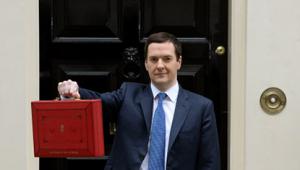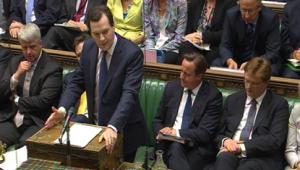By Richard Johnstone | 18 December 2014
Councils in England will face an average cut in spending power of 1.8% in 2015/16, local government minister Kris Hopkins has announced, but London boroughs and urban authorities will face larger reductions.
Setting out the Local Government Finance Settlement today, Hopkins also announced the government would continue to make funding available to freeze the council tax, equivalent to a 1% increase in rates. The trigger at which councils will have to hold a local referendum if they turn down the freeze grant will remain at 2%, the same level as last year, he added.
Setting out the figures to MPs, Hopkins also said no local authority would face a loss of more than 6.4% in their spending power in 2015/16, which is the lowest level of maximum reduction in this parliament.
However, figures from the Department for Communities and Local Government indicated that authorities in London will be subject to an average cut of 4.3% in spending power, while metropolitan districts will face a cut of 3.8%. Shire authorities will only face a reduction of 0.6%.
A council’s total spending power is made up of government grants as well as revenue from the council tax and locally retained business rates. The spending power calculations include the money that authorities are placing into the Better Care Fund.
Hopkins told MPs that in total, English local government was expected to spend over £114bn in the year.
‘This settlement therefore recognises that local authorities continue to make a vital contribution to helping pay off the deficit.
‘Once again the settlement leaves councils with considerable total spending power. As planned, we have kept the overall reduction to 1.8% – lower than last year and one of the lowest levels of reduction under this government. If we include the funds that government has provided to support local transformation, the overall reduction is even lower – at 1.6%.’
Around £342m will be made available for a fifth successive council tax freeze, meaning that £5bn has been made available since 2010.
Hopkins called on all authorities to free rates to help people with the cost of living.
‘We are providing additional funding equivalent to a 1% council tax increase, to help councils freeze.
‘All councils should be taking advantage of this extra government funding and freezing council tax for hardworking families. Councils choosing to increase should have the courage to put their case to local people. Any council proposing an increase of 2% or more will need to allow local people the opportunity to approve or veto the increase in a referendum.’
The minister also announced that, following consultation, the government has decided not to reverse planned £172m cut to local welfare funding for councils.
He said that authorities should continue to offer local welfare assistance from within existing budgets.
However, part of each upper-tier local authority’s funding settlement would be earmarked, though not ringfenced, for local welfare schemes, totalling £129.6m.
An analysis of the figures by CIPFA, produced in association with Pixel Financial Management, found that once ringfenced grants and Better Care Fund money are removed, the average spending cut in government grants rises to 6%.
CIPFA chief executive Rob Whiteman said that the government’s figures appeared to hide the true impact of cuts upon some local authorities.
‘The difference between what has been presented today by the Government and the actual cash figures for cuts to local councils is stark.
‘It demonstrates why we urgently need transparency about government funding instead of this continued conflation and inflation spending which hides the true size and scope of the cuts many local authorities face.
‘While closer co-operation between local authorities and the NHS is fundamental to better outcomes in social care, to portray money already spent through pooled budgets as extra funding is seriously distorting, not least because the same money appears to be counted as NHS funding as well.’
Responding to the publication of the finance settlement, the Local Government Association said that its initial analysis showed that savings of £2.6bn would need to be found from council budgets for 2015/16.
The cut announced today brings the total reduction in core government funding to councils since 2010 to 40%, LGA chair David Sparks said. Over this period councils will have made £20 billion worth of savings.
‘Today’s settlement confirms the huge financial challenge local services now face,’ he added.
‘Councils have spent the past four years finding billions of pounds worth of savings, while working hard to protect the services upon which people rely.
‘But those same efficiency savings cannot be made again. The savings of more than £2.5bn councils need to find before April will be the most difficult yet. We cannot pretend that this will not have an impact on local government’s ability to improve people’s quality of life and support local businesses.’
County Councils Network said it meant authorities would face tough financial conditions, which would place the continued delivery of many services in jeopardy.
Councils have already stripped out around 40% of their budgets since 2010, CCN chair David Hodge stated.
‘Counties have played their role in reducing the deficit in the last four year. ‘Despite this ongoing commitment, the council tax cap will continue to accelerate the loss of essential services for vulnerable elderly people and deny our young people vital school places. Localism was introduced to bring decisions to closer to local people not cut services.’






















